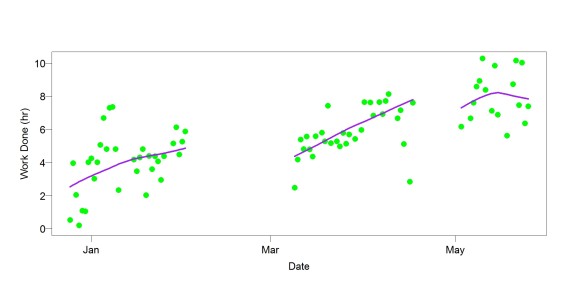An article in the New York Times describes how difficult it has been for hospital administrators to get their employees to wash their hands. Hospital-acquired infections are an enormous problem and cause many deaths, yet “studies [in the last 10 years] have shown that without encouragement, hospital workers wash their hands as little as 30 percent of the time that they interact with patients.” Hospitals are now — just now — trying all sorts of things to increase the hand-washing rate. The germ theory of disease dates from the 1800s. Ignasz Semmelweis did his pioneering work, showing that hand-washing dramatically reduced death rate (from 18% to 2%), in 1847.
So hospitals are only now (in the last few years) grasping the implications of facts and a well-established theory from the 1800s. What goes unsaid in the usual discussion of how awful this is — how dare doctors refuse to wash their hands!, a sentiment with which I agree — is how backward both sides of the discussion are. A discussion in which many lives are at stake.
The Times article now has 209 comments, many by doctors and nurses. The doctors, of course, went to medical school and passed a rigorous test about medicine (“board-certified”). Yet they don’t know basic things about infection. (One doctor, in the comments, calls hand-washing “ this current fad“.) They appear to have no idea that it is possible to improve the body’s ability to resist infection. I read all the comments. Not one mentioned two easy cheap low-tech ways to reduce hospital infections:
1. Allow patients to sleep well. The body fights off infection during sleep, but hospitals are notoriously bad places to sleep. Patients are woken up by nurses, for example. You might think that everyone knows sleep helps fight infection . . . but apparently not hospital administrators nor the doctors and nurses who commented on the Times article. It was in the interest of these doctors and nurses to suggest alternative solutions because they dislike washing their hands.
2. Feed patients fermented foods (or probiotics). Fermented foods help you fight off infections. I believe this is because the bacteria on fermented food are perfectly safe yet successfully compete with dangerous bacteria. In any case, plenty of studies show that probiotics and fermented foods reduce hospital infections. In one study, “use of probiotics reduced the new cases of C. difficile-associated diarrhea by two thirds (66 per cent), with no serious adverse events attributable to probiotics.” Maybe this just-published article (Probiotics: a new frontier for infection control”) will bring a few people who work in hospitals into the 21st century.
That hospital administrators and their doctors and nurses — and, in this discussion, their critics — are stuck in the 1800s is clear enough. What is slightly less clear is that our understanding is better now than it was in the 1800s and some of the new knowledge is useful.
Thanks to Bryan Castañeda.
